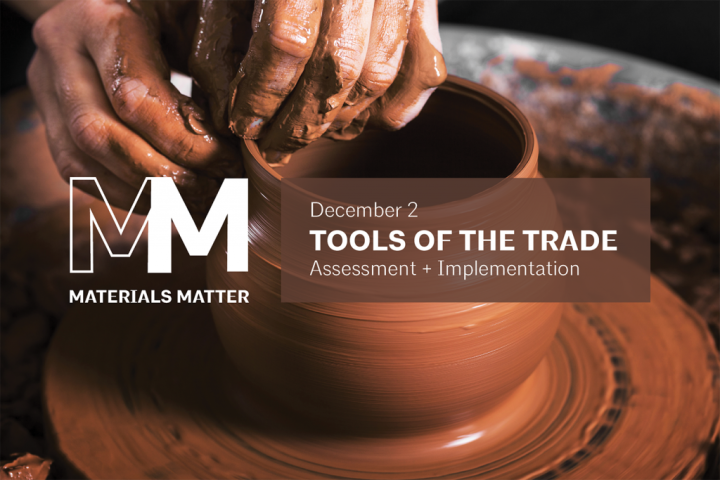Materials Matter is a five-session series from the AIA Seattle chapter that delivers comprehensive, high-level knowledge and strategies for assessing and selecting healthy, sustainable materials. I had the opportunity to attend the first run of the newly-developed series with many of the local industry leaders who helped create the innovative course materials. AIA Seattle has just finished hosting the series for a second time.
The series encompasses everything tied to building materials and how they impact our lives: human health, the tools and data available for assessing and prioritizing materials, and strategies for integrating informed decision-making into projects and practice. Join me as I discover exactly why Materials Matter.

The first two sessions of AIA Seattle’s Materials Matter series illustrated the dire current situation of our planet and the measurable changes that results from it. Over the next 20 years, 900 billion square feet of new and rebuilt construction will be created worldwide – the carbon equivalent of building an entire New York City every 47 days. Facing such a crisis can be daunting, especially when some people continue to deny that climate change even exists. But so much future construction is a huge opportunity to affect change in the design community. The third part of Materials Matter focuses on how to begin tackling the problem on an individual level.
Not all carbon is created equal. At the beginning of a building’s lifespan, the majority of emissions are produced by materials and very little come from operations. As time progresses these levels gradually switch places; the longer a building is occupied, the more emissions come from tenant use. But time is limited: within the next two decades, we will reach the point of no return when we cannot reverse all the damage already caused. “Carbon that we emit now is way more important than the carbon we will emit in 100 years,” explains Erin McDade of Architecture 2030.
Building industry professionals have an important role to play in creating efficient, sustainable structures. Kathrina Simonen, founding director of the Carbon Leadership Forum, says that “Our job is to design good buildings and make good choices.” One of the tools to help make good choices is Life Cycle Analysis (LSA). “LSA is an accounting tool, and one thing that it does really well is [measure] emissions,” Simonen continues, “This isn’t about changing our buildings, it’s about changing our grid.”
Health Product Declarations (HPD) are another way to motivate market change. By asking manufacturers to disclose a list of chemicals for their products, you are showing them that reducing hazardous chemicals in buildings is something consumers care about. Identify the most commonly-used materials in your firm; if they don’t already have HPDs, ask for them. Collect HPD websites and resources for your team to use so that everyone is working with the same knowledge. The Bullitt Center has already assembled and made public an extensive list of hazard-free materials, and borrowing research that already exists is much less work than starting from scratch.
By the end of the session, the Materials Matters attendees were already thinking of ways to bring what they learned back to their companies. Mark Stein, AIA, especially liked how building industry professionals can drive market change: “I will be presenting these topics to our staff in hopes of establishing a team to begin familiarizing ourselves with these topics and tools,” he said. “The eventual goal is to educate and empower our clients, and provide a marketable service that is net positive.”
Reblogged this on Green Living 4 Live.